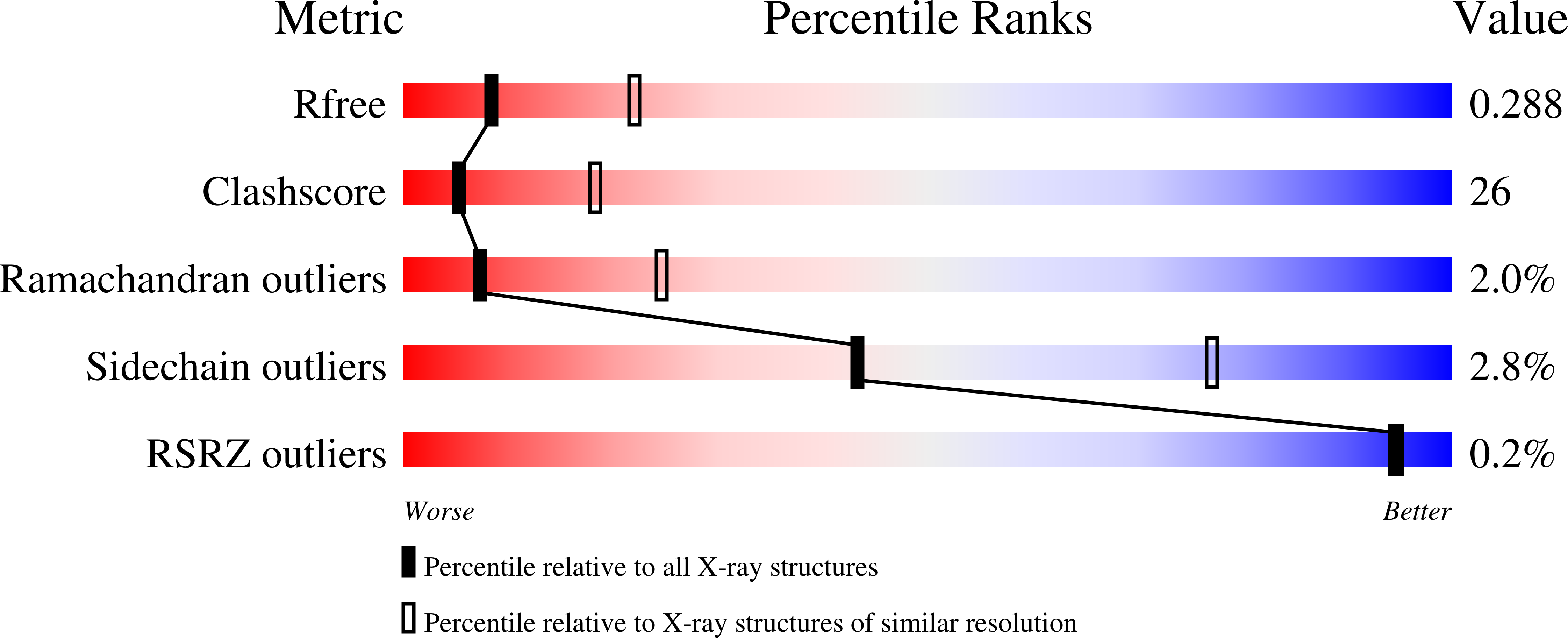
Deposition Date
2021-08-16
Release Date
2021-11-17
Last Version Date
2023-10-18
Entry Detail
PDB ID:
7RUD
Keywords:
Title:
DAHP synthase complex with trifluoropyruvate oxime
Biological Source:
Source Organism:
Escherichia coli (strain K12) (Taxon ID: 83333)
Host Organism:
Method Details:
Experimental Method:
Resolution:
2.80 Å
R-Value Free:
0.28
R-Value Work:
0.19
R-Value Observed:
0.20
Space Group:
C 1 2 1


